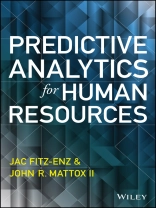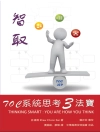Create and run a human resource analytics project with
confidence
For any human resource professional that wants to harness the
power of analytics, this essential resource answers the questions:
‘Where do I start?’ and ‘What tools are available?’ Predictive
Analytics for Human Resources is designed to answer these and
other vital questions. The book explains the basics of every
business–the vision, the brand, and the culture, and shows
how predictive analytics supports them. The authors put the focus
on the fundamentals of predictability and include a framework of
logical questions to help set up an analytic program or project,
then follow up by offering a clear explanation of statistical
applications.
Predictive Analytics for Human Resources is a how-to
guide filled with practical and targeted advice. The book starts
with the basic idea of engaging in predictive analytics and walks
through case simulations showing statistical examples. In addition,
this important resource addresses the topics of internal coaching,
mentoring, and sponsoring and includes information on how to
recruit a sponsor. In the book, you’ll find:
* A comprehensive guide to developing and implementing a human
resource analytics project
* Illustrative examples that show how to go to market, develop a
leadership model, and link it to financial targets through causal
modeling
* Explanations of the ten steps required in building an analytics
function
* How to add value through analysis of systems such as staffing,
training, and retention
For anyone who wants to launch an analytics project or program
for HR, this complete guide provides the information and
instruction to get started the right way.
表中的内容
Foreword xiii
Preface xv
Chapter 1 Where’s the Value? 1
Some Basics 1
What Is Analytics? 2
Two Values 4
Analytic Capabilities 4
Analytic Value Chain 6
Analytic Model 8
Typical Application 14
Training Value Measurement Model 15
Inside the Data 16
Notes 19
Chapter 2 Getting Started 21
Go-to-Market Models 22
Assessment 23
Developmental Experiences 23
Financial Connections 24
Sample Case 26
Focusing on the Purpose 26
Present-Day Needs 28
How Human Capital Analytics Is Being Used 29
Turning Data into Information 30
Three Value Paths 30
Solving a Problem 31
Essential Step 31
Prime Question 32
Case in Point 32
Preparing for an Analytics Unit 33
Ten Steps for an Analytics Unit 35
Structure and Team Building 36
Developing an Analytics Culture 37
Notes 37
Chapter 3 What You Will Need 39
Dealing with the C Level 40
Breaking Through 41
Research 41
Recruiting a Sponsor or Champion 42
Making the Sale 43
Selling Example 44
Working with Consultants and Coaches 46
Designing and Delivering Reports 48
Making an Impact 50
Process Management 50
Preparation 52
Notes 54
Chapter 4 Data Issues 55
Efficiency Measures 56
Effectiveness Measures 61
Business Outcome Measures 67
Note 69
Chapter 5 Predictive Statistics Examples 71
Begin with the End in Mind 71
Go Back to the Beginning 74
Who Owns Data, and Will They Share It? 75
What Will You Do with the Data? 77
What Form Is the Data In? 79
Is the Data Quality Sufficient? 80
Note 82
Chapter 6 Predictive Analytics in Action 83
First Step: Determine the Key Performance Indicators 83
Second Step: Analyze and Report the Data 89
Relationships, Optimization, and Predictive Analytics 96
Predictive Analytics 97
Interpreting the Results 102
Predicting the Future 111
Structural Equation Modeling 113
Notes 114
Chapter 7 Predicting the Future of Human Capital Analytics 115
What Does the Future Look Like? 116
Bringing It All Together 126
Predictive Analytics for HR in Action 126
Notes 128
Epilogue 129
Appendix: Example Measures of Efficiency,
Effectiveness, and Outcomes 133
About the Authors 135
Index 137
关于作者
JAC FITZ-ENZ, PHD, is founder and Chief Executive Officer of Human Capital Source, Inc. He founded the Saratoga Institute in Santa Clara, California after holding human resource positions at several major technology and financial services companies. He is widely regarded as the father of human capital strategic analysis, having published the first HR metrics in 1978 and the first international HR benchmarks in 1985.
JOHN R. MATTOX II, PHD, is Director of Research at Knowledge Advisors. He is a former Associate Director of Performance Management at KPMG, Manager of Learning Effectiveness at Pricewaterhouse Coopers, and a Manager at Arthur Andersen.












